UNTIL the Broncos burst on the scene, too many of Queensland’s quality players were heading south. This 10-part exclusive series charts the highs and lows of the old Brisbane Rugby League.
In 1987, Williams would be a foundation director of the Brisbane Broncos, as the BRL finally succumbed to the behemoth of the then NSW Rugby League competition.
Williams, then 26, had every intention of playing at least another season when he took the field for Redcliffe in 1979.
But he retired after just one Woolies pre-season match, telling The Courier-Mail’s Lawrie Kavanagh he wanted to concentrate on his job as an advertising representative for Radio 4BK.
Before the Broncos Part 2: BRL’s moment of truth
“I feel the game has slipped in appeal to the players and the public in the past few years in Brisbane,” he said.
“Last season was probably the most boring, with Easts and Redcliffe the only interesting teams, and Valleys getting into the grand final as a pure fluke.
“I believe rugby league in Brisbane and Queensland needs a big boost.
“A lot of people will blame the players, but when things go wrong in business, you look at the executive, not the workers.”
Could the seeds of the Broncos have been sown there and then?

The 1978 season is best remembered in Queensland for the emergence of future Immortal Wally Lewis at Valleys, and the meteoric rise to stardom of winger Kerry Boustead.
Boustead played all three interstate matches, three home Tests against the Kiwis, and toured Britain and France with the Kangaroos – all while based at the Souths club in Innisfail.
Brisbane and Sydney clubs were circling.
They wanted the lightning quick 18-year-old Boustead, who had captivated the hearts of league fans everywhere.
The QRL hoped Kerry would join a Brisbane club in 1979, given his older brother Ian, a state representative in 1976, had played for Wynnum Manly.
But Ian’s advice to Kerry was to head directly to Sydney.
“You will learn a lot more there,” Ian told his little brother.
Kerry took his advice, and signed with the Eastern Suburbs Roosters.
All this paints a somewhat depressing picture of the BRL scene.
But the reality was the BRL still had a huge following and, right up until the last “big” Brisbane grand final in 1987, there were many quality matches and dramatic moments, on and off the field.
There was always something to keep the BRL in the spotlight, delaying the “inevitable” emergence of a “super” team, representing the city in a national competition.
Of course, self-interest of club officials also played a part.
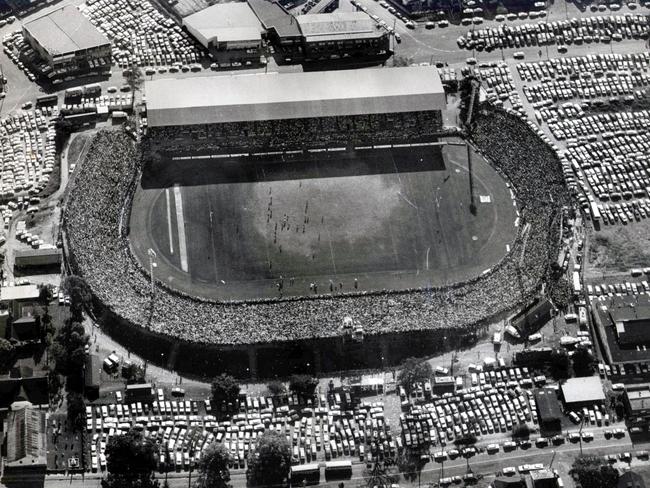
The popularity of Brisbane club football soared in 1968, when the grand final crowd topped 30,000 for the first time.
There would not be another grand final crowd below 30,000 until 1983, and there were two 40,000-plus crowds along the way.
There was saturation media coverage for the BRL in the 1970s, and the fact the state side could not win a series against NSW didn’t seem to matter.
That was another issue and before the debate got serious about a club side in a national competition, interstate football had to be saved and the Origin concept was born in 1980.
In 1978, when Boustead bounced from one triumph to another, Wally Lewis’ precocious talent was a major factor in the John Rhodes-coached Valleys side climbing from sixth on the ladder in 1977, to third in the 1978 minor premiership.
Lewis’ first appearance came off the bench, in the Amco Cup knockout competition, against an Illawarra divisional side coached by former Great Britain halfback Tommy Bishop.
Lewis scored the only try in Valleys’ 35-7 loss.
Alarm bells should have been ringing then.
How was it that Brisbane’s most famous club could be so humiliated by a country division team from NSW?
Two years earlier, Brothers had belted Penrith 19-8 in the Amco Cup, so the Valleys loss was seen as an aberration.
But in 1979, because of a preponderance of one-sided scores, Amco Cup organisers insisted Queensland field only two sides – Combined Brisbane and Country – to ensure they were competitive with the Sydney clubs.
Brisbane beat Country 8-5 in an all-Queensland semi-final at Lang Park, but then lost 22-5 to Cronulla in the grand final at Leichhardt Oval, with Wally Lewis coming off the bench.
Lewis remained in the BRL until he became the Broncos’ inaugural skipper in 1988.
But along the way there were literally hundreds of defections to Sydney clubs, starting with Lewis’ good mate, Paul “Fatty” Vautin, at the end of the 1978 season, his first in the top grade at Wests.

Paul’s father George recalls how obsessed his son was with playing in Sydney.
“Wests wanted to keep him, but when (Wests president) Hugh Kelly realised how keen Paul was on moving to Sydney, he got in touch with Manly,” George says.
“We drove down to Sydney with Paul and met (Manly CEO) Ken Arthurson before signing.”
Vautin’s first taste of the top grade in Sydney came against eventual premiers St George in a Round 1 match at Brookvale Oval in 1979.
“There was an injury, and (coach) Frank Stanton looked along the reserves bench and said, ‘Get the redhead on’,’’ Vautin recalls.
“The first time I took the ball up, I got crunched by Rod Reddy, John Jansen and Graeme Wynn. I thought, ‘How good is this! I’m playing Sydney first grade’.
“Mum and Dad couldn’t get the games live on Brisbane television, so they would drive down to Tweed Heads on the weekend, where they could pick up the radio broadcasts.”
The fact Vautin went to Sydney as quickly as possible does not mean he did not have a great respect for the BRL.
In fact, even now, he can rattle off names from the star-studded Wests side of 1972.
They didn’t win the premiership but – with the likes of Wayne Stewart, Rob “Yogi” Thompson, Ian Robson, Richie Twist, Artie Connell and Greg Oliphant – they were the competition drawcards, pulling crowds of up to 25,000.
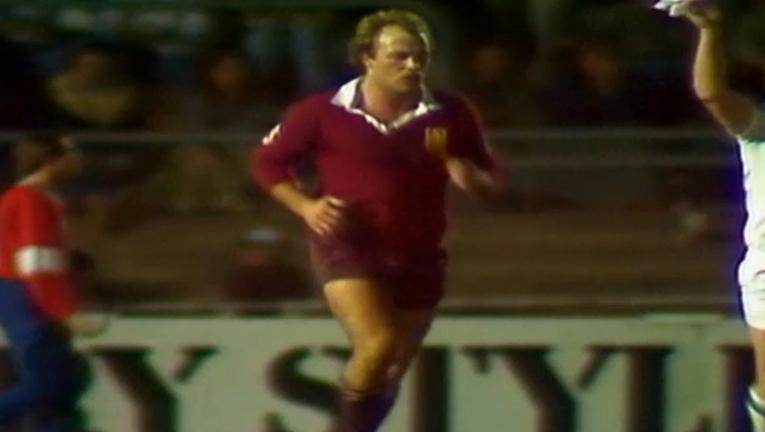
Vautin was captivated by Valleys’ brave showing against premiers Easts in the 1978 grand final.
Playing at lock, Lewis was magnificent for Valleys, with Channel 7 television commentator George Doniger being audacious – and parochial – enough to suggest he was a bolter for the Kangaroo touring side to Britain and France.
Easts won 14-10, with captain-coach Des Morris admitting he thought the Tigers were “gone” at different stages.
Lewis won a premiership with Valleys the next year, when they whipped the Wayne Bennett-coached Souths 26-0 in the grand final.
Everything seemed right with the world when Queensland won the inaugural Origin match in 1980 (with Lewis at lock) and, for the first time, the Brisbane grand final was televised live in Sydney.
It was a showpiece game, outshining the Sydney grand final from the previous day, at least in terms of entertainment value.
Underdogs Norths, coached by Kiwi Graham Lowe, beat favourites Souths 17-15.
It seemed there was plenty of reason to be optimistic about the local league scene in Brisbane.
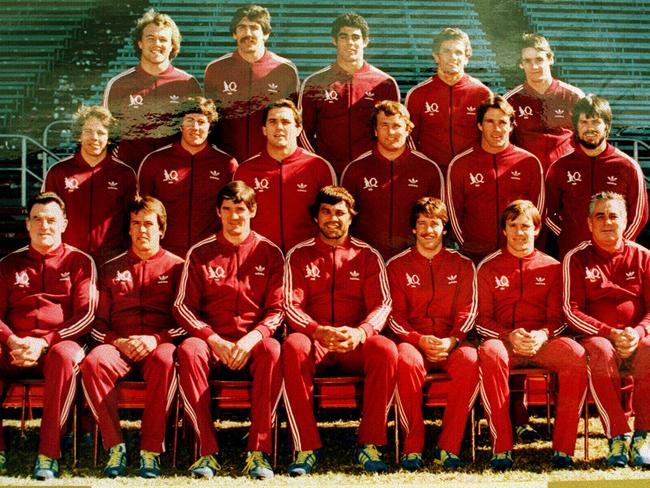
CHRIS “Choppy” Close, man of the match in the first two stand-alone State of Origin matches in 1980 and 1981, joined fellow Queenslanders Paul “Fatty” Vautin, Paul McCabe, John Ribot and Bruce Walker at Manly Warringah in 1982.
Close had won a premiership with Valleys in 1979 and enjoyed two seasons with Redcliffe, first under the coaching of Frank Stanton and then with Arthur Beetson as captain-coach.
In 1980, he had toured New Zealand with the Australian side, but the next year suffered the disappointment of missing Redcliffe’s grand final appearance through suspension.
It was time to move south, despite his great affection for the Brisbane competition.
“As a kid in the bush, I was Valleys through and through,” he says. “Blokes like Hugh O’Doherty, Marty Scanlan, Mick Retchless and big John McCabe were my heroes.
“I won a premiership with Cunnamulla in 1978, and scored 52 tries.
“One of my mates was Tom Duggan, who had toured New Zealand with Queensland in ’74. He was coming towards the end of his career at Valleys, and got me to come down and try out.”
Close started the season in reserve grade but by the end of 1979, the then 20-year-old was a Brisbane and Queensland representative centre, as well as a BRL premiership winner.
There were a number of Sydney offers. One of the first, a verbal approach from Roosters secretary Ron Jones at Easts Leagues Club in Bondi Junction, came after an Amco Cup match.
“As things transpired, I had made up my mind to go to Wests Magpies in Sydney when Redcliffe chairman Dick ‘Tosser’ Turner made me an offer to join the Dolphins,” Close recalls.
“I probably wasn’t quite ready to go to Sydney. I was getting married that year and it was a big move.
“Redcliffe secretary Don McLennan flew out to Cunnamulla and I signed a contract at the airport.”
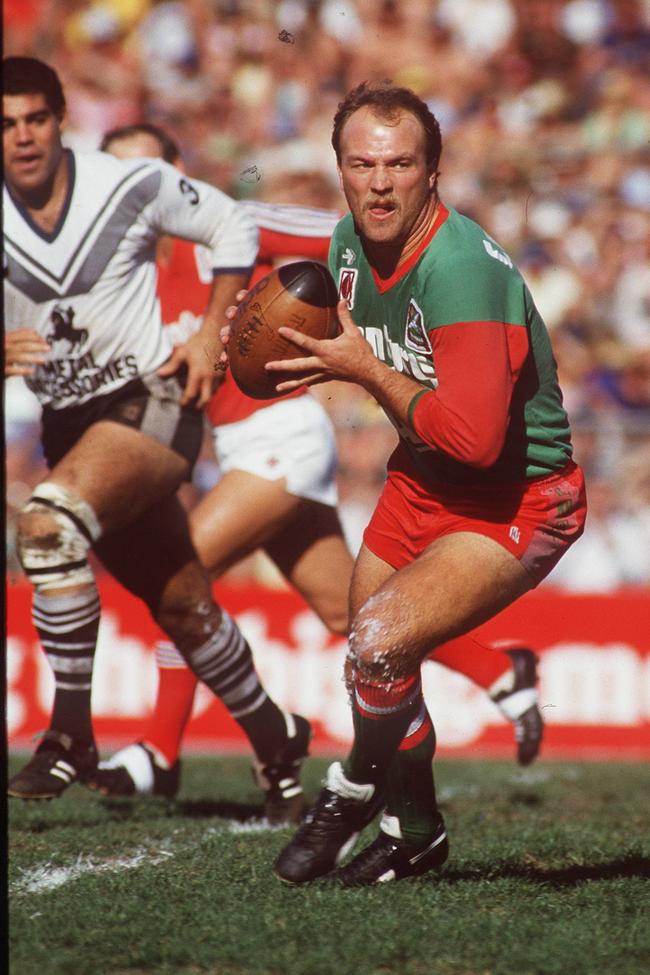
In 1981, Wally Lewis had made his Test debut against France – the only resident Brisbane player in a side captained by Steve Rogers from Cronulla-Sutherland.
Lewis’ Valleys team missed out on the finals.
Souths, coached by legendary former South Sydney forward Bob McCarthy, were minor premiers and were expected to advance straight to the grand final when they met Redcliffe in the semi-final.
But led by 36-year-old captain-coach Arthur Beetson, Redcliffe won 21-10.
Gary Balkin’s Melbourne Hotel at West End hosted a Souths supporters night in the days after the major semi.
It was meant to be a joyous occasion, with the faithful toasting the club’s expected march to glory. Instead, it was a poorly attended function, funereal in its mood.
Balkin, who would become a founding Broncos director, was a prolific try-scoring winger for Brothers and Souths. The schoolteacher turned publican knew business and football.
As Souths’ patron, he could be relied on for financial help in tough times.
Because of his intimate knowledge of the BRL scene, he would play a crucial role in the Broncos consortium’s bid to get local club officials “on-side” in the battle to become the Brisbane franchise holder for an expanded NSWRL competition in 1988.
Souths won the 1981 grand final, with unsung winger Mick Reardon scoring the winning try in the dying seconds.
Utility player Steve Bleakley had taken the place of the suspended Close in the Redcliffe three-quarter line.
Close says he “wasn’t in love with the concept” of moving to Sydney, but knew that was where his future lay.
“The QRL offered me reasonable money to stay, but the contract was a bit loose.
“I was romanced by eight Sydney clubs.
“My wife and I were taken to some of the best restaurants, and once she received a bouquet of flowers big enough to cover our dining table. It was quite flattering.
“In the end, I chose Manly. It was a good contract and Ken Arthurson helped set up a loan for my wife and I to buy a house.”
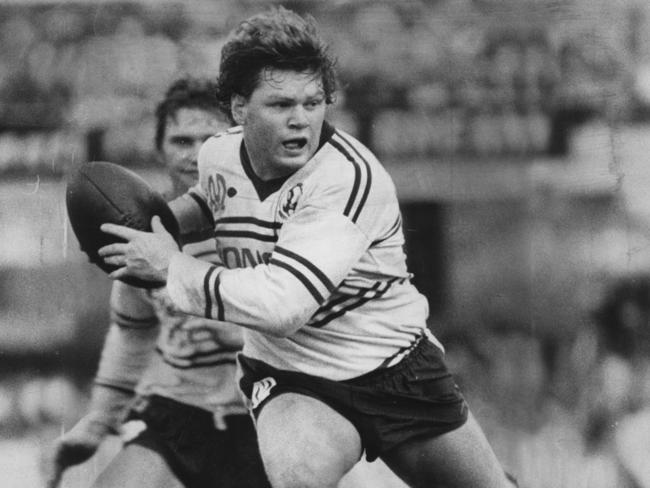
While Close was settling into life on Sydney’s northern beaches, the QRL was putting the finishing touches on its revolutionary 1982 Winfield State League, involving the eight Brisbane clubs and six Country divisions – North Queensland, Central Queensland, Wide Bay, Toowoomba, Ipswich and Gold Coast.
The old intercity Bulimba Cup competition, between Brisbane, Ipswich and Toowoomba, had been discarded after 1972, because Brisbane clubs had drained much of the top talent from the Ipswich and Toowoomba regional competitions.
Despite a number of brave showings by the Country divisions and several upset results, the inaugural State League did not capture the imagination of Brisbane fans, who shunned Lang Park games involving bush outfits.
When the BRL kicked off at the close of the 1982 State League, the crowds returned, with Wynnum Manly the drawcards.
When Wynnum won their first ever premiership – beating Souths 17-3 in the grand final – thousands of fans celebrated back at the leagues club that night, with thousands more cramming into waterside Green Park the next day to continue whooping it up.
I know how chaotic the scenes were, as my editor at the time, John Morton, insisted that he and I, along with photographer Geoff McLachlan, deliver a carload of first editions of The Telegraph – Brisbane’s now defunct afternoon paper.
We were mobbed and there was plenty of good-natured banter, given I had tipped Souths to win in the newspaper.
These euphoric scenes were not to be repeated in Brisbane until the Broncos won their maiden title in 1992.
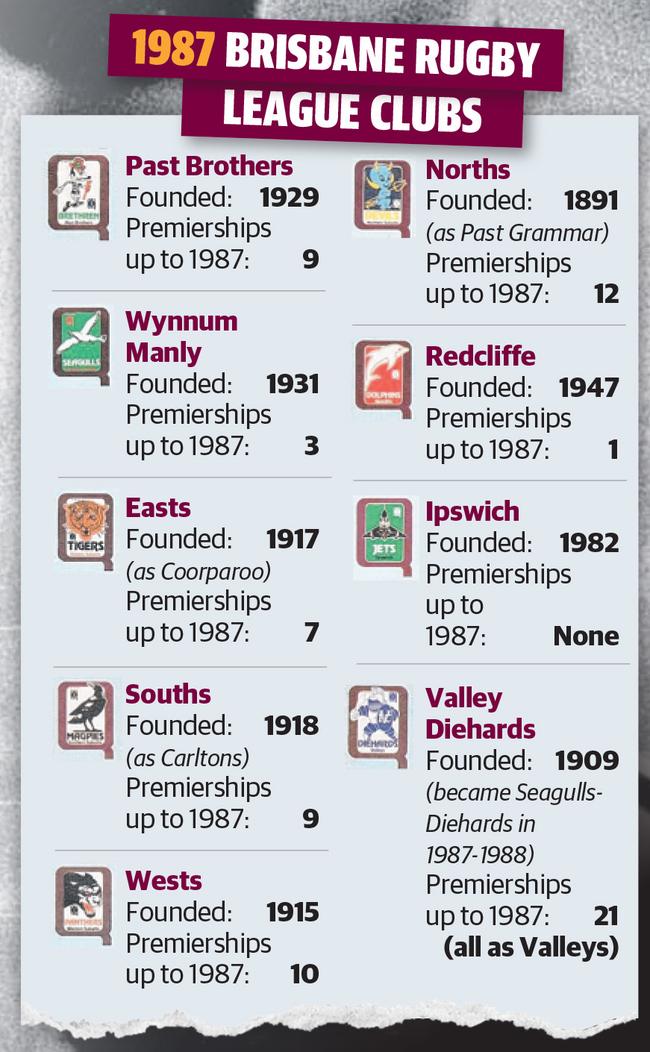
Meanwhile at Brothers, which boasted the best leagues club in Brisbane, Wayne Bennett was handing in his resignation after three years as coach, with legendary Sydney warrior Tom Raudonikis appointed captain-coach for the 1983 season.
Brothers had finished third in 1980, before dropping to last the next year, and then improving only slightly to finish sixth in 1982.
It looked as if Bennett would be without a job in 1983, but Souths Juniors offered him the role as coaching director at Acacia Ridge.
With Queensland having won the first ever Origin series 2-1 (in 1980 and 1981 there had been stand-alone games), the Maroons got 11 players in the 28-man, 1982 Kangaroo side to tour England, Wales and France.
Six of those players were from the BRL, plus Rohan Hancock from the Toowoomba competition.
The Kangaroos, the first Australian side to complete a northern hemisphere tour undefeated, were given a ticker-tape parade in Sydney on their return.
In Brisbane, the 1983 season kicked off with 1982 wooden-spooners Wests winning the Woolies Pre-Season.
But that fairytale result under coach Ron Raper masked trouble times ahead.


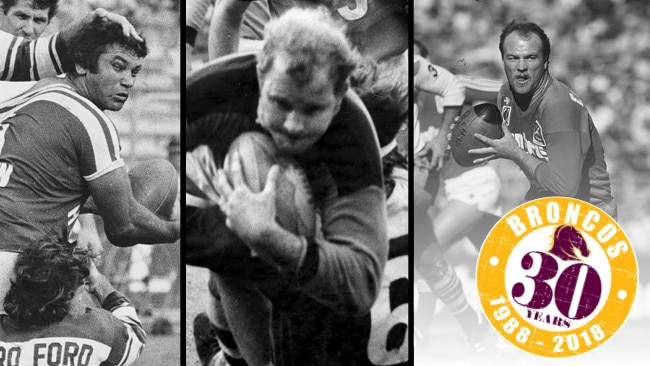
Add your comment to this story
To join the conversation, please log in. Don't have an account? Register
Join the conversation, you are commenting as Logout
Crisafulli rated: Premier’s next-level mistake in rise of LNP empire
David Crisafulli’s reign as Premier has not been without a series of missteps. These are the moments that shaped his first 12 months. READ THE ANALYSIS
RBA rate cut is ‘same old economic circle jerk’
While many were quick to welcome last week’s rate cut, some say it’s a “bad joke” that’s unlikely to mean much for households because of one thing. HAVE YOUR SAY